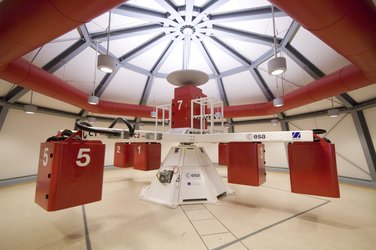How to apply
Interested in applying? The subsequent steps outline the application process for Spin Your Thesis:
- Form a team of two to four students who fulfil the eligibility criteria and have an interest in working in a team as a supplement to their university syllabus
- Define and discuss a potential project as a team
- Identify, and speak to an academic supervisor about the project, and if they would be willing to endorse the project on behalf of the team. The endorsing professor should be a thesis or project supervisor of a team member
- Ask the endorsing professor to write a formal letter of endorsement in which they pledge their support to all the team members as well as the proposed project. In the letter the endorsing professor should clearly state that they support the student’s application and that they accept responsibility for their Spin Your Thesis! project.
- Perform a review of scientific literature regarding similar research projects.
- Read the conditions to apply carefully, and familiarise yourself with the technical constraints, LDC documentation and capabilities, and all the guidelines provided in the List of documents.
- Write an experiment proposal following the experiment proposal template. Teams should be sure to include why the LDC is required to perform this experiment
- Apply for the programme by sending to all your documentation: the experiment proposal, the letter(s) of endorsement, and the consent forms individually signed by each team member to the email spinyourthesis @ esa.int in one zip file before the deadline.
Instructions for the experiment proposal
The experiment proposal should focus on the scientific and technological objectives of the project, detailing what the team intends to investigate and why. The team must also clearly discuss the technical details that explain what equipment is required, the design of the experiment, and how the experiment will be assembled, integrated and tested.
Prior to filling out the experiment proposal template, teams must carry out a literature review to determine if work has already been done on the same or similar topic. Literature references are essential in order to demonstrate that teams are fully informed about the current status of research in this field. Information on how similar experiments have been performed can also inform the experimental design process.
The experiment proposal must also explain the relevance of hypergravity to the project. More importantly the experiment proposal must explain the relevance of using the Large Diameter Centrifuge as a means of achieving its objectives.
Whilst not a selection criterion, teams should state clearly in their proposal how their experiment and project objectives align with the seventeen United Nations Sustainable Development Goals (SDGs), and the ESA Strategic Goals. Teams are encouraged to choose the goals that align closest to their project and describe in detail how their project aligns with that specific goal.
The applying team must explain in detail how the proposed experiment is related to their syllabus. Teams should indicate which academic projects they are involved in and how their proposed experiment would be relevant to these projects.
The text of the proposal should be comprehensible to scientists of various fields and engineers with a general scientific background.
Questions and contact details
If you have questions about the programme, please contact the Spin Your Thesis! team at: spinyourthesis @ esa.int. When sending an e-mail, please include a clear and concise subject title.















 Germany
Germany
 Austria
Austria
 Belgium
Belgium
 Denmark
Denmark
 Spain
Spain
 Estonia
Estonia
 Finland
Finland
 France
France
 Greece
Greece
 Hungary
Hungary
 Ireland
Ireland
 Italy
Italy
 Luxembourg
Luxembourg
 Norway
Norway
 The Netherlands
The Netherlands
 Poland
Poland
 Portugal
Portugal
 Czechia
Czechia
 Romania
Romania
 United Kingdom
United Kingdom
 Slovenia
Slovenia
 Sweden
Sweden
 Switzerland
Switzerland



























